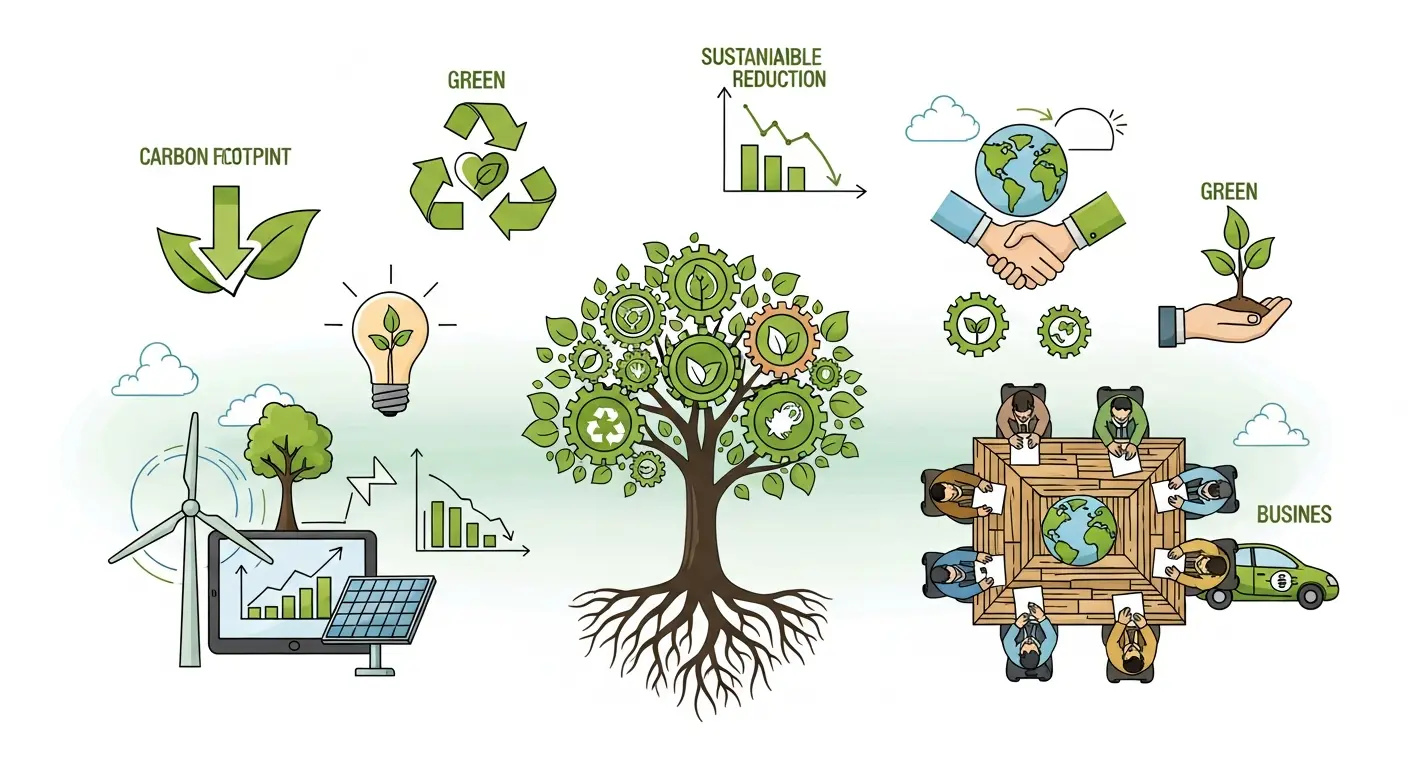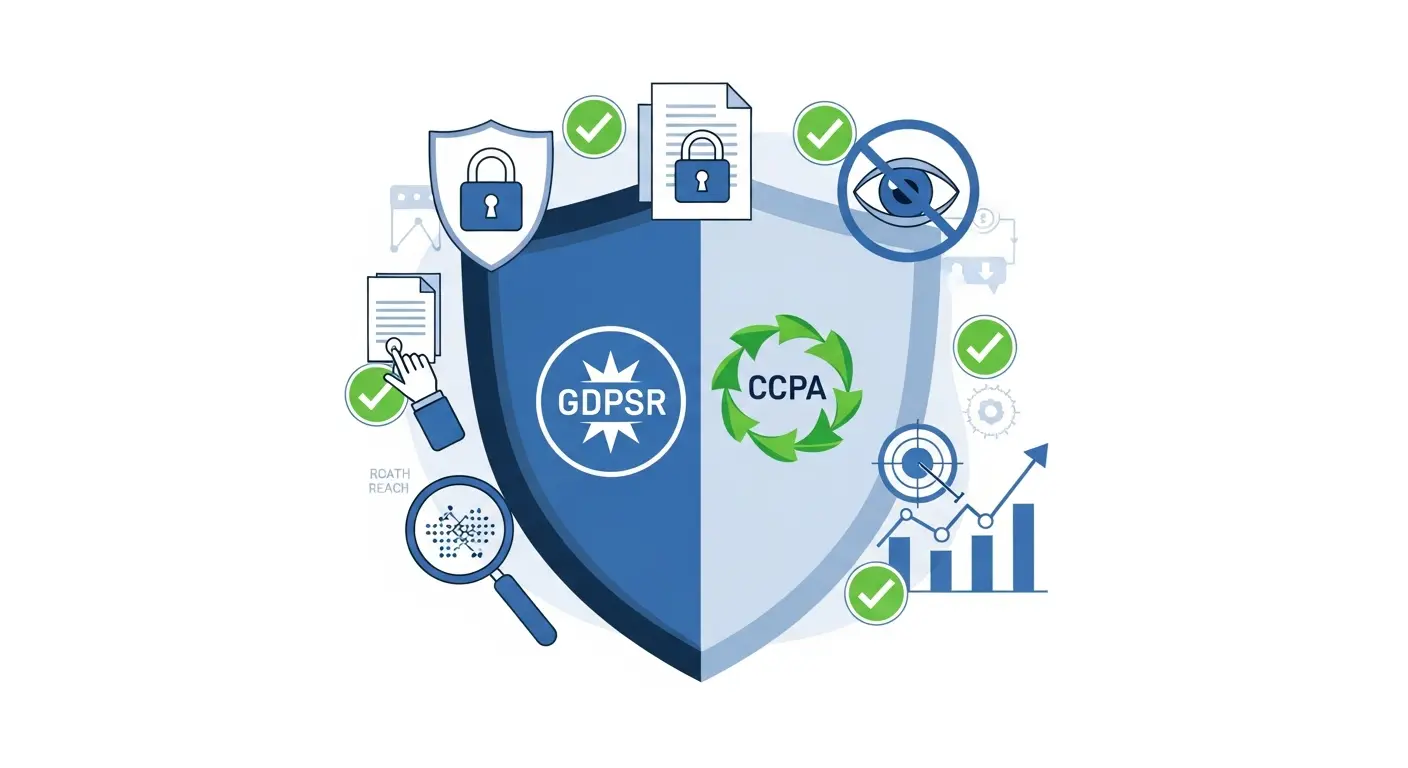Sustainability in Digital Advertising: Green Marketing Trends
In the relentless pursuit of maximizing ad revenue, publishers are constantly navigating a complex landscape of new technologies, shifting user behaviors, and evolving regulations. But there's a new, powerful current shaping the future of our industry: sustainability. Far from being a niche concern or a corporate buzzword, environmental consciousness is becoming a critical pillar of a robust and future-proof monetization strategy. The digital world, despite its ethereal nature, has a very real and significant carbon footprint, and the advertising ecosystem is a major contributor. For publishers, understanding and addressing this impact is no longer optional—it's a strategic imperative that can unlock new revenue streams, attract premium advertisers, and build deeper trust with audiences.
This article delves into the burgeoning world of sustainability in digital advertising. We'll explore the hidden environmental costs of your ad stack, uncover the green marketing trends driving advertiser demand, and provide a comprehensive guide for publishers to implement sustainable practices. This isn't about sacrificing revenue for a cause; it's about aligning your business with a global shift that makes environmental responsibility and profitability two sides of the same coin. By the end, you'll have a clear roadmap to reduce your carbon footprint while simultaneously enhancing your revenue potential.
The Surprising Carbon Footprint of Digital Advertising
It's easy to think of the internet as a clean, intangible cloud of data. The reality is starkly different. The information and communication technology (ICT) sector's carbon footprint is substantial, estimated to be on par with, or even exceeding, that of the global aviation industry. Digital advertising is a significant driver of this energy consumption. Every single ad impression triggers a cascade of energy-intensive processes that, when multiplied by trillions, create a massive environmental impact.
So, where does this carbon cost come from?
- Complex Programmatic Supply Chains: The real-time bidding (RTB) process is a modern marvel of speed and complexity, but it's incredibly inefficient from an energy perspective. A single ad request can trigger dozens, sometimes hundreds, of bid requests sent from the publisher to SSPs, then to DSPs, and back again. Each "hop" in this chain involves multiple servers in different data centers consuming electricity. The more convoluted the supply path, the higher the carbon cost.
- Data Transfer and Creative Weight: Heavy ad creatives—high-resolution images, unoptimized JavaScript, and particularly high-bitrate video—require significant bandwidth to deliver. This data transfer consumes energy both at the data center level and on the end-user's device, draining battery life and contributing to the overall footprint.
- User Device Energy Consumption: Complex ads with heavy animations and tracking scripts force the user's CPU and GPU to work harder, consuming more power. While a single instance is minuscule, aggregating this across millions of users results in substantial energy usage.
- Redundant Operations: Inefficient ad stacks often involve redundant ad calls, multiple ad verification vendors running duplicative checks, and consent management platforms firing numerous pixels. Each of these processes adds to the computational load and energy drain.
According to research from Scope3, a leader in supply chain emissions data, the digital advertising industry emits over 20 million metric tons of CO2 annually. They've found that a significant portion of ad spend is wasted on "climate risk" inventory—impressions that are low-value and high-carbon. For publishers, this means that a portion of your ad inventory isn't just underperforming; it's actively contributing to a larger environmental problem, a fact that advertisers are becoming increasingly aware of.
The Rise of Green Marketing and Advertiser Demand
The environmental impact of advertising is no longer an abstract problem; it's a key consideration for brands and consumers alike. A new era of "green marketing" is dawning, driven by powerful consumer trends and corporate responsibility mandates.
Conscious Consumerism: Today's consumers are more informed and value-driven than ever. Studies consistently show that a majority of consumers, particularly Millennials and Gen Z, prefer to buy from brands that demonstrate a commitment to environmental and social responsibility. This preference extends to the media they consume. They are more likely to trust and engage with publishers who align with their values.
Advertiser Imperatives: This consumer shift is forcing brands to re-evaluate every aspect of their operations, including their media buying strategies. Major global brands are setting aggressive carbon reduction targets, and their advertising supply chain is now under the microscope. They are actively seeking to:
- Decarbonize their Media Spend: Advertisers are partnering with firms like Scope3 and Cedara to measure the carbon footprint of their ad campaigns. They are using this data to actively shift budgets away from high-carbon, low-efficiency publishers and toward "green" inventory.
- Demand Supply Path Optimization (SPO): Brands and agencies are aggressively culling their supply partners, prioritizing direct, transparent, and efficient paths to publisher inventory. This is done not only to reduce fraud and intermediary fees but also to minimize the energy-wasting complexity of the ad delivery chain.
- Prioritize Sustainable Partners: A publisher's demonstrated commitment to sustainability is becoming a key differentiator and a unique selling proposition (USP). Brands are willing to pay a premium for inventory that helps them meet their own corporate sustainability goals.
This isn't a fleeting trend. This is a fundamental rewiring of the advertising marketplace. For publishers, it presents a clear choice: adapt and monetize this new demand for sustainable ad placements, or risk being filtered out of media plans as "carbon-inefficient."
Technical Implementation: A Publisher's Guide to Greener Ad Monetization
Becoming a sustainable publisher doesn't require a complete overhaul of your business. It's about making smarter, more efficient choices across your technology, ad operations, and content strategy. The good news is that many of these practices not only reduce your carbon footprint but also improve user experience and site performance, leading to a direct positive impact on revenue.
1. Streamline Your Ad Stack and Supply Path
The single biggest impact a publisher can have is to reduce the complexity and redundancy of their ad delivery chain.
- Efficient header bidding Wrappers: While header bidding democratized access to demand, bloated setups are a prime source of carbon emissions. Work with a partner that offers a lightweight, optimized wrapper. Critically evaluate every demand partner in your setup. Do they bring unique demand and a high bid rate? If not, a partner may be adding more latency and carbon cost than revenue. Pruning your bidders down to a core group of high-performers is a powerful green initiative.
- Reduce Redundancy: Consolidate your ad stack where possible. Using a unified solution for multiple functions (like header bidding, mediation, and analytics) can reduce the number of scripts running on your page. Similarly, evaluate your verification and consent management vendors to ensure they are operating efficiently without duplicative calls.
- Direct Deals and PMPs: Prioritize direct deals and Private Marketplace (PMP) agreements. These create the shortest, most efficient path between the advertiser and your inventory, cutting out numerous energy-consuming intermediaries.
2. Optimize Creatives and Ad Formats
The weight of an ad creative has a direct correlation to its carbon footprint. Lighter ads mean less data transfer and faster load times.
- Leaner video ads: Video is a high-impact format, but it can also be a high-carbon one. Implement best practices like click-to-play instead of autoplay, use adaptive bitrate streaming to serve the appropriate quality for the user's connection, and enforce limits on file size from your demand partners. Shorter, more engaging video creative is both more user-friendly and more sustainable.
- Next-Gen Image Formats: Encourage the use of modern image formats like WebP and AVIF, which offer superior compression compared to traditional JPEGs and PNGs, drastically reducing file sizes without sacrificing quality.
- Lazy Loading: This is a crucial technique for both sustainability and performance. Lazy load all ad units that are "below the fold" (not immediately visible to the user). This prevents the ad from consuming resources unless a user actually scrolls it into view. This not only saves energy but also improves your site's initial load time and Core Web Vitals scores.
3. Enhance Website and Application Performance
A fast, lightweight, and efficient website or app is inherently a more sustainable one. The principles of good performance engineering are the same principles that guide digital decarbonization.
- Focus on Core Web Vitals (CWV): Google's CWV metrics (LCP, FID, CLS) are a proxy for user experience, but they also reflect site efficiency. A site with a good CWV score is typically well-optimized, with fewer layout shifts and faster rendering, which translates to less wasted CPU and energy. Strategic ad layout optimization is key here, ensuring ads load without disrupting the user experience or harming your CWV scores.
- Efficient Mobile Strategies: For publishers with a significant mobile audience, sustainability is paramount. In the context of app monetization, this means choosing lightweight SDKs that don't drain user batteries. Implementing an intelligent ad mediation platform is also critical. A smart mediation stack reduces redundant network calls by creating a unified auction, calling only the necessary ad networks instead of pinging dozens of them sequentially for every single impression.
- Server-Side Optimizations: Utilize a Content Delivery Network (CDN) to cache assets closer to your users, reducing data travel distance. Implement modern compression techniques like Gzip or Brotli on your server to shrink file sizes before they are even sent.
4. Leverage Data and Analytics for Carbon Measurement
You cannot manage what you do not measure. Integrating carbon measurement into your analytics workflow is the final piece of the puzzle.
- Partner with Measurement Platforms: Work with services like Scope3 to get a clear picture of your inventory's carbon footprint. They can analyze your supply paths and identify "dirty" supply chains and inefficient partners, giving you the data needed to make informed optimization decisions.
- Tie Performance to Emissions: Use your existing analytics tools to find correlations between high-emissions ad units and other metrics. Are your highest-carbon placements also the ones with the lowest viewability or highest latency? Our analytics guide can help you set up the right framework to uncover these insights. This data allows you to eliminate placements that are bad for the environment and bad for your business simultaneously.
- Communicate Your Progress: Once you begin making improvements, use this data to market your inventory. Create a "sustainability statement" or a media kit page that details the steps you've taken and showcases your reduced carbon footprint.
The Business Case: Monetizing Your Green Credentials
Embracing sustainability is more than just good corporate citizenship; it's a powerful monetization strategy. Here’s how to turn your green efforts into greenbacks.
- Create "Green PMPs": Package your low-carbon, high-performance inventory into Private Marketplaces. Proactively offer these packages to brands and agencies that have public sustainability commitments. They are actively looking for this inventory and are often willing to pay a premium for it.
- Attract Premium, Value-Aligned Brands: Use your sustainability efforts as a core part of your sales pitch. It differentiates you from the competition and makes your brand a more attractive partner for the growing number of eco-conscious advertisers.
- Improve Core Revenue Drivers: Remember, a faster, more efficient site doesn't just reduce carbon—it improves SEO, increases user engagement, lowers bounce rates, and boosts ad viewability. These are all direct drivers of increased ad revenue. Your sustainability initiatives have a powerful halo effect on all your core business metrics.
- Future-Proof Your Business: The regulatory landscape is constantly changing. Just as we've seen a wave of privacy regulations like GDPR and CCPA, it's highly likely that environmental and carbon-reporting regulations will eventually come to the digital advertising space. By taking proactive steps now, you position your business as a leader and ensure you are prepared for future compliance requirements.
Common Mistakes to Avoid on Your Sustainability Journey
As you begin to implement these practices, be mindful of a few common pitfalls:
- Greenwashing: This is the most critical mistake. Do not simply claim to be a "green publisher" without taking concrete, measurable actions to back it up. Brands are using sophisticated data partners to verify these claims. Authenticity is key; be transparent about your journey, including the areas where you're still working to improve.
- Sacrificing Performance for Purity: The goal is a balance. Don't make changes so drastic that they negatively impact your revenue or user experience. For example, eliminating a high-performing but moderately inefficient demand partner overnight might do more harm than good. The approach should be incremental and data-driven optimization, not wholesale elimination.
- Operating in a Silo: Sustainability in digital advertising is an ecosystem-wide challenge. Collaborate with your ad tech partners. Ask them about their sustainability initiatives, their server efficiency, and how they can help you optimize your supply chain. Choose partners who are as committed to this journey as you are.
- Neglecting Measurement: Without data, your efforts are just guesswork. Continuously monitor your site performance, ad latency, and, where possible, your carbon metrics. Use this data to validate your strategies and identify new opportunities for improvement.
Conclusion: A Greener Path to Greater Profitability
The movement towards a sustainable digital advertising ecosystem is gaining momentum at an incredible pace. For publishers, this represents a pivotal moment—an opportunity to lead, innovate, and align business growth with environmental responsibility. The narrative has shifted from "profit vs. planet" to "profit through planet." By optimizing your ad stack, streamlining your ad delivery, and enhancing your site's overall performance, you create a virtuous cycle. You deliver a better, faster experience for your users, you build a more valuable and desirable product for advertisers, and you reduce your impact on the world around us.
This is not a trend that will fade away. It is the new foundation for a more efficient, transparent, and responsible digital marketplace. The publishers who embrace this change today will be the ones who thrive tomorrow, building stronger partnerships, attracting premium revenue, and future-proofing their business for years to come.
Ready to build a more sustainable and profitable ad strategy? Our team of experts can help you optimize your ad stack for both performance and efficiency. It’s time to take the next step. Contact our team to learn more, book a demo of our platform, or explore our solutions to see how we can help you on your sustainability journey.



